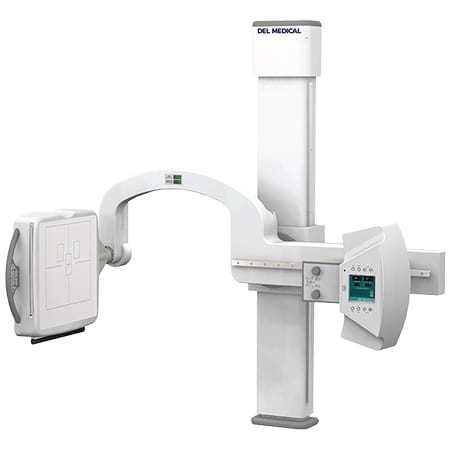
U-arm and C-arm X-ray systems are integral to medical imaging, each serving distinct functions with unique characteristics. Under various key aspects, they offer different advantages and applications.
Design
The U-Arm system features a U-shaped arm with the X-ray source and detector on opposite ends, facilitating movement around a stationary patient. In contrast, the C-Arm system, recognizable by its C-shaped arm, connects the X-ray source to the detector, providing greater mobility and flexibility for positioning around the patient.
Functionality and Use
U-Arm systems are typically used for standard radiographic applications, such as imaging of the chest, spine, and extremities, and are common in outpatient centers for routine X-rays. The C-Arm, however, is primarily used for fluoroscopic intraoperative imaging during surgeries and emergency procedures, offering real-time imaging crucial for surgical decision-making.
Flexibility and Positioning
The U-Arm offers vertical and horizontal movement, allowing various imaging angles without repositioning the patient, which is ideal for straightforward imaging procedures. The C-Arm’s superior flexibility allows it to be maneuvered into various orientations without disturbing the patient or the sterile field, making it essential for complex and varied imaging tasks during operations.
Space Requirement
U-Arm systems require a dedicated room with sufficient space for the equipment and arm movement and are generally not mobile. On the other hand, C-Arm systems are often used in operating rooms and can be both stationary and mobile. The mobility of C-Arm systems allows them to be used in various locations, including bedside in patient rooms for emergency procedures.
Image Acquisition and Quality
U-Arm systems are quick at acquiring standard images and are suitable for high-throughput environments. In comparison, C-Arm systems provide real-time, high-resolution images, which are indispensable for procedures that require continuous imaging and instant feedback.
Conclusion
In conclusion, while both U-arm and C-arm X-ray systems are fundamental in medical imaging, they cater to different requirements. The U-arm is optimized for routine, static imaging, offering ease of use and quick image acquisition for standard radiographic procedures. In contrast, the C-arm is invaluable in dynamic, complex situations like surgeries and emergency interventions due to its real-time imaging capabilities and enhanced flexibility. Each system thus plays a crucial and unique role in differing medical contexts.
